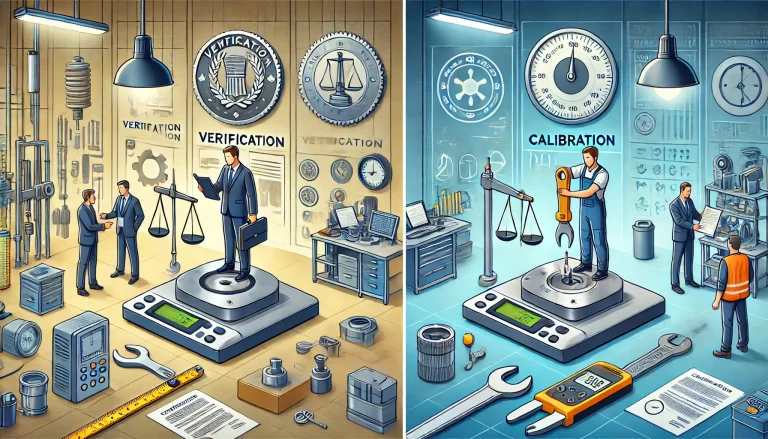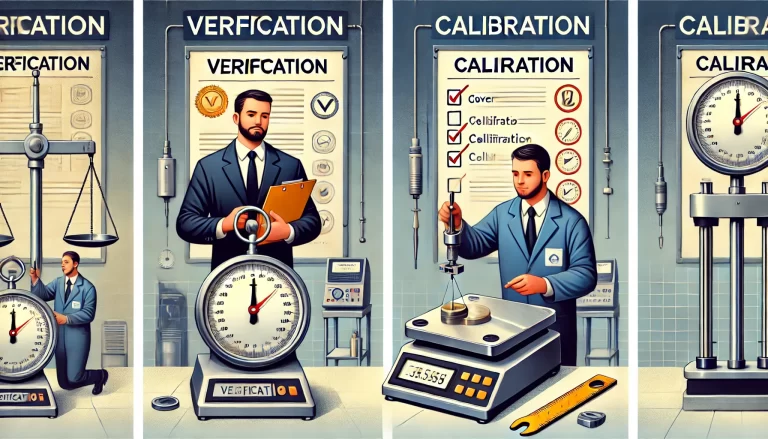In many organizations, especially those with a quality control department, managing instrument calibration certificates is a crucial task. However, even experienced quality control professionals often struggle to differentiate whether calibration certificates should be categorized as documents or records. This article explores the proper classification of calibration certificates and provides guidance on how to manage them effectively.

1. Definition of Calibration Certificates
A calibration certificate is issued after a measurement instrument undergoes a calibration process. It contains data about the instrument’s performance and the measurements taken to verify its accuracy. The key question is whether this certificate should be categorized as a document (a formal piece of information used for reference) or a record (evidence of performed activities or events).
2. Understanding Classification from a Process Control Perspective
From a process control standpoint, calibration certificates, although presented in document format, essentially serve as records. They document the process and results of multiple measurement activities conducted during calibration. These records provide evidence that an external calibration institution has verified the instrument. Therefore, despite being formatted as a document, the core purpose of the calibration certificate aligns with the concept of a record.

3. Classification Based on Technical Results
Unlike verification reports that may simply state whether an instrument passes or fails a test, calibration certificates typically provide detailed measurement data. It is the responsibility of the organization to evaluate whether the instrument can still be used based on this data. The certificate, therefore, functions more as a data log or record than as a document. This reinforces the argument that calibration certificates should be categorized as records that document the technical results of calibration activities.
4. When Calibration Certificates Are Records or External Documents
In laboratory and institutional settings, calibration certificates issued for the organization’s own instruments are considered internal records. These records demonstrate compliance with calibration standards and provide evidence that the equipment meets required specifications.
However, there are exceptions. If a laboratory or organization receives calibration certificates for equipment belonging to another party, these certificates are classified as external documents, not internal records. This distinction depends on whether the certificate pertains to the organization’s own calibration activities or those conducted externally without direct relevance to the organization’s operations.
5. Simplifying the Concept
To simplify, calibration certificates should be classified as follows:
- Internal Record: If the certificate documents the calibration of the organization’s own equipment, it is an internal record.
- External Document: If the certificate is received from an external source for non-organizational equipment, it is an external document.

6. Reference to Standards
For those who find the definitions of documents and records confusing, the ISO 9000 series provides a comprehensive set of terms and guidelines. Consulting these standards can offer further clarity on the categorization and management of calibration-related information.
7. Practical Tips for Calibration Management
Calibration management can be complex, with numerous documents and records involved. To maintain a clear and organized system, quality control teams should:
- Regularly review and update filing protocols.
- Use labels or tags to distinguish between records and documents.
- Implement software systems to digitally archive and categorize certificates.
- Train staff on the proper classification and storage of calibration certificates based on their function and origin.

Conclusion
Understanding whether calibration certificates should be filed as documents or records requires analyzing both the certificate’s purpose and origin. In most cases, certificates serve as records documenting calibration activities. However, when dealing with certificates for external equipment, they may be classified as external documents. By following clear guidelines and referencing relevant standards, organizations can ensure proper classification and efficient management of calibration information.
